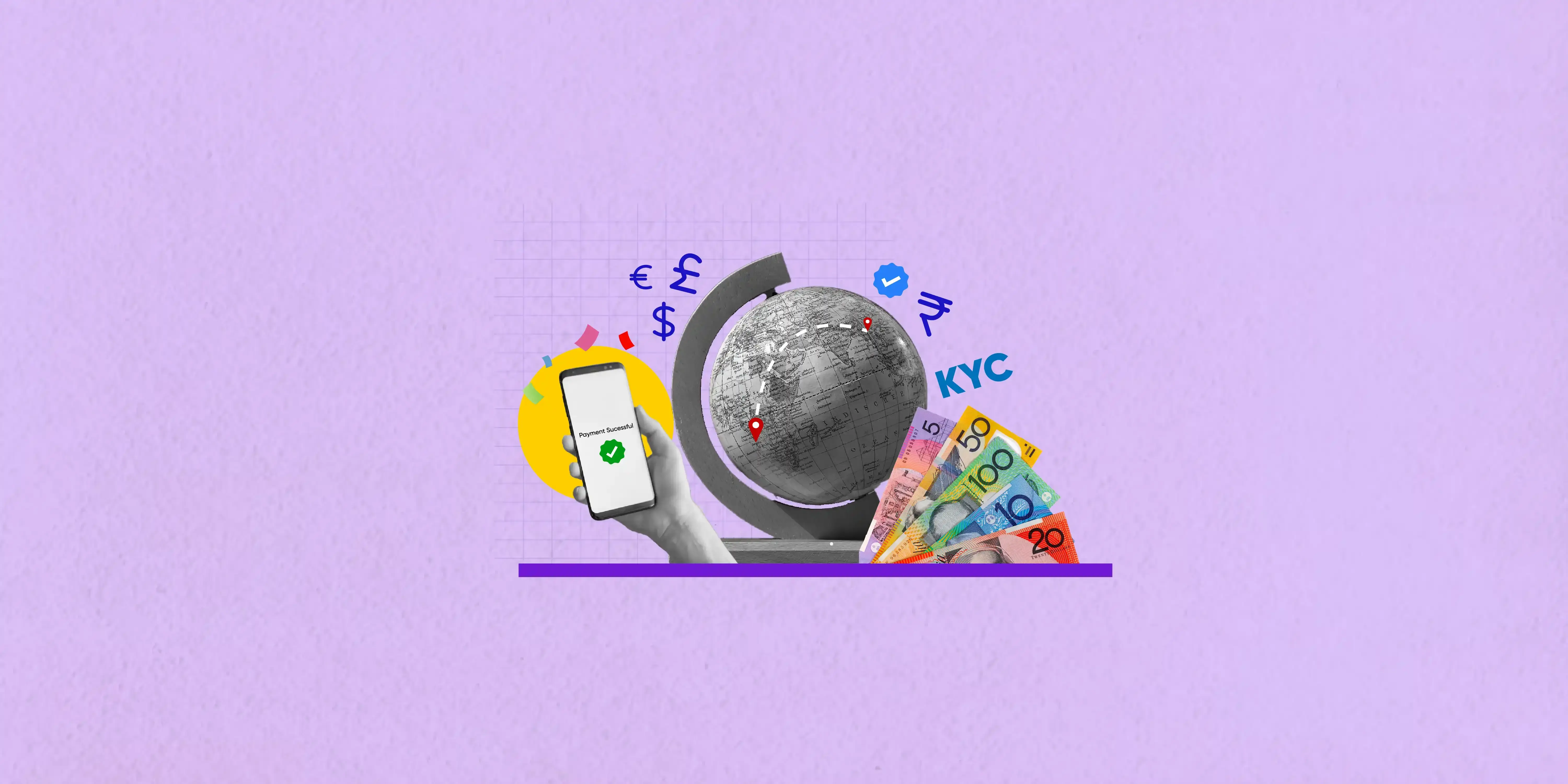Navigating the maze: Simplifying cross-border payments for end users
Akshata Naik
01 Dec 2025
Curious about the UX essentials for cross-border payment apps? Discover how to simplify regulations, ensure security, and optimize for multi-currency transactions. Learn how to create a seamless, localized experience that builds trust and accessibility. Dive into the full blog for all the key insights!

Designing for cross-border payments is like navigating a digital minefield, one misstep, and you’re facing a user experience disaster. Imagine trying to pay for something in a foreign currency, but the conversion tool is more confused than you are, or you’re on a site that’s only available in a language you barely recognize. Welcome to the wild world of cross-border payments!
The challenge? Balancing diverse user expectations, fluctuating exchange rates, and global regulations, all while ensuring a seamless experience that doesn’t make users want to pull their hair out.In this blog, we’ll explore the key considerations for designing cross-border payment apps and websites that don’t just work, but make the process as smooth as a local transaction.
Navigation
Imagine you’re halfway through paying for something overseas, but the next step is hidden behind a labyrinth of confusing options. Not exactly a user experience win, right? That’s why transparent and frictionless navigation is crucial. Users should glide through the process without hitting any unexpected bumps, like unclear buttons or ambiguous next steps. Each click should take them exactly where they expect, with clear labels and a straightforward path that anyone could follow.
Think of it this way: the less your users have to think, the more they’ll trust your platform. If they can move from selecting their payment method to confirming the transaction without a second thought, you’ve nailed it. So, keep it simple, intuitive, and as frustration-free as possible, because no one likes to feel lost in the middle of a payment.
Multilingual interfaces
In the world of cross-border payments, a multilingual interface is like having a trusty travel guide, it speaks the local language, so you don’t have to fumble with awkward translations. Imagine landing on a payment page where everything is in a language you barely recognize which naturally makes you feel uneasy. That’s why a seamless multilingual interface is non-negotiable. Users should feel right at home, no matter where they’re from or what language they speak. The key is to keep things clear and consistent, with language options that are easy to find and switch between.
If the users can effortlessly navigate your platform in their preferred language, they’re more likely to stick around and complete the transaction. No awkward guesswork, no mistranslations, just a smooth, frictionless experience that feels like it was made just for them. After all, everyone appreciates a little linguistic hospitality, especially when money’s on the line.
Easy to use conversion tools
Imagine trying to make a payment, but the conversion rate looks like it’s written in ancient script. Confusing? Definitely. That’s why currency conversion tools need to be easy to use, clear, and, most importantly, trustworthy. Users should be able to see exactly what they’re getting, with no hidden fees or surprise exchange rates lurking in the shadows.
They should be able to calculate their payment in their preferred currency with just a click or two, knowing exactly what the final cost will be.According to a report by Wisernotify, more than 50% of shoppers leave their carts because of extra costs and conversion issues. No mental gymnastics, no second-guessing, just a transparent, frictionless experience that lets them focus on the transaction, not the math. Because when it comes to cross-border payments, clarity is key.
Security and trustworthiness
When it comes to cross-border payments, security isn’t just a nice-to-have, it’s the non-negotiable vault that keeps everything safe. Imagine trying to send money overseas and wondering if it’s going to vanish into a digital black hole. Your payment system needs to be not only secure but also fully compliant with global regulations. According to a study by Juniper Research, online payment fraud is projected to exceed $206 billion over the next five years. That’s a staggering number, and it’s why robust security features like encryption, two-factor authentication, and compliance with international standards are essential. When users know that their transactions are protected by the highest security measures and adhere to global regulations, they’re far more likely to trust your platform.
Multiple payment methods and localized options
In cross-border payments, offering multiple payment options is essential to meet the diverse needs of users worldwide. If a user is trying to complete a transaction but finding that only one payment method is accepted, and it’s not available in your country, it can be frustrating. It can lead to abandoned transactions. This is why providing a variety of payment methods, from credit cards to digital wallets, is so important.
But it’s not just about variety; localized payment options are crucial too. A study by Worldpay found that over 77% of global e-commerce transactions are made using local payment methods. By supporting options like Alipay in China, SEPA in Europe, or UPI in India, you ensure that users can pay in the way that’s most convenient and familiar to them. Offering these choices doesn’t just make transactions smoother; it shows that you understand and respect the unique needs of your global audience.
Cultural sensitivity
When dealing with cross-border payments, cultural sensitivity is crucial. It’s not just about translating text into different languages; it’s about understanding and reflecting the cultural nuances and preferences of your users. Imagine a payment interface that’s in your native language but uses design elements that clash with your cultural expectations. It’s like having a menu with unfamiliar dishes, it just doesn’t sit right.
An article by Nielsen Norman Group highlights that designs that incorporate local nuances of international markets benefit organizations and their customers. This means integrating local aesthetics and cultural norms into your payment platform is key. From color schemes and imagery to language and symbols, your design should resonate with your audience's cultural context. By localizing not only the text but also the visual and interactive elements, you make users feel at home, enhancing their overall experience and building stronger trust.
Future trends
Looking ahead in the world of cross-border payments, several exciting trends are set to reshape the landscape. Blockchain technology, for instance, promises faster and more transparent transactions, reducing the need for intermediaries and potentially lowering fees.
Artificial intelligence (AI) is another game-changer, enhancing fraud detection and personalizing user experiences. AI-powered systems can spot unusual activity in real-time, offering an extra layer of security. Additionally, the rise of digital currencies like central bank digital currencies (CBDCs) could redefine how we think about cross-border transactions. Keeping an eye on these trends ensures that your payment platform remains innovative and competitive. Embracing these advancements not only improves user experience but also positions you at the forefront of the industry’s evolution.
In summary, designing a seamless cross-border payment experience involves navigating diverse challenges with finesse. From ensuring transparent navigation and easy-to-use conversion tools to offering multiple payment options and respecting cultural sensitivities, each element plays a crucial role. Staying ahead with future trends like blockchain and AI can further enhance security and efficiency. By addressing these aspects thoughtfully, you not only streamline the payment process but also build trust and satisfaction among users. In the ever-evolving world of cross-border payments, a well-designed, user-centric approach is key to staying competitive and meeting global expectations.
We hope this blog helped you understand the challenges faced during designing cross border payments apps and websites better. Ready to elevate your designs and enhance your digital presence? At Lemon Yellow, we specialize in crafting delightful user experiences that leave a lasting impact. Let’s create something amazing together, contact us today!







